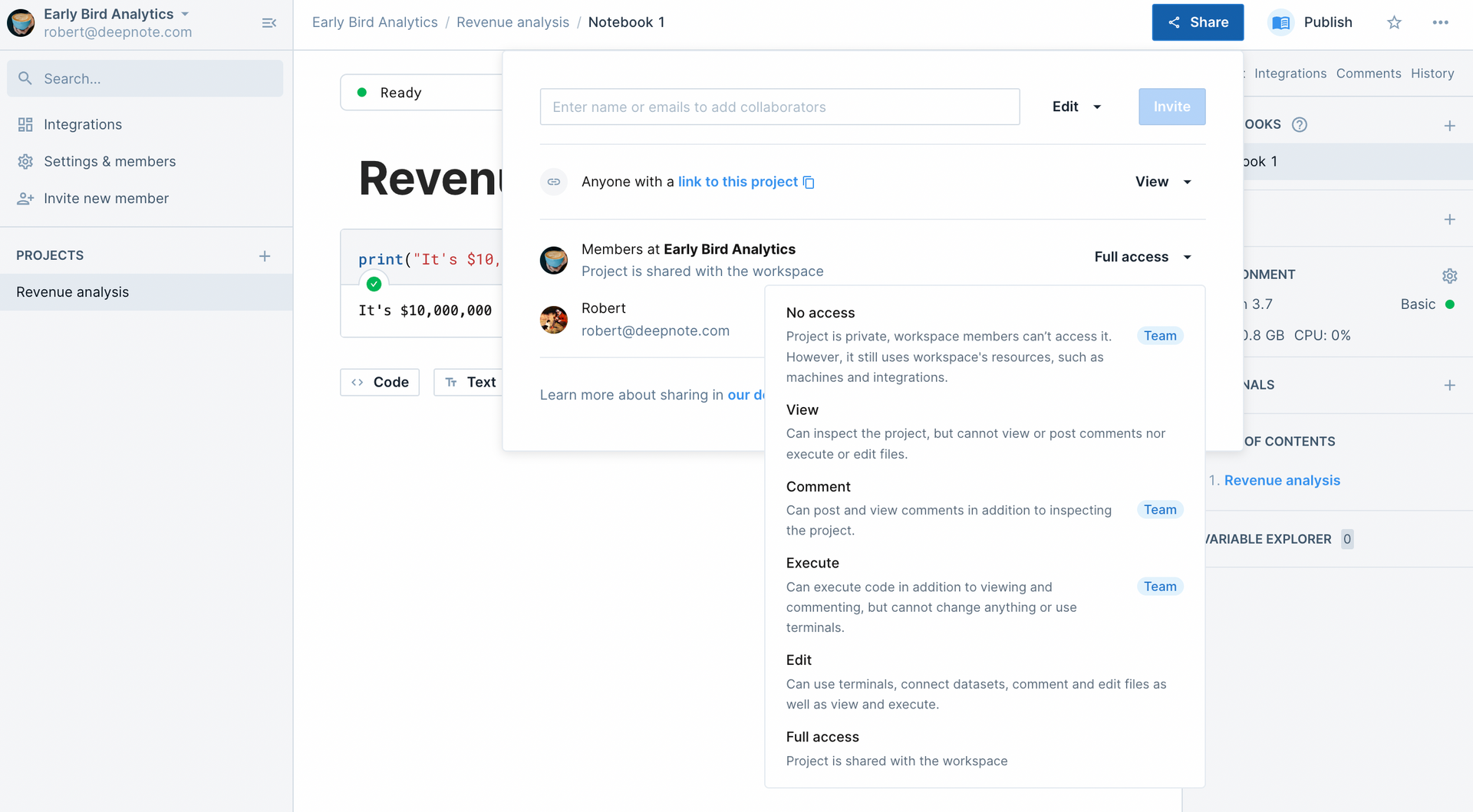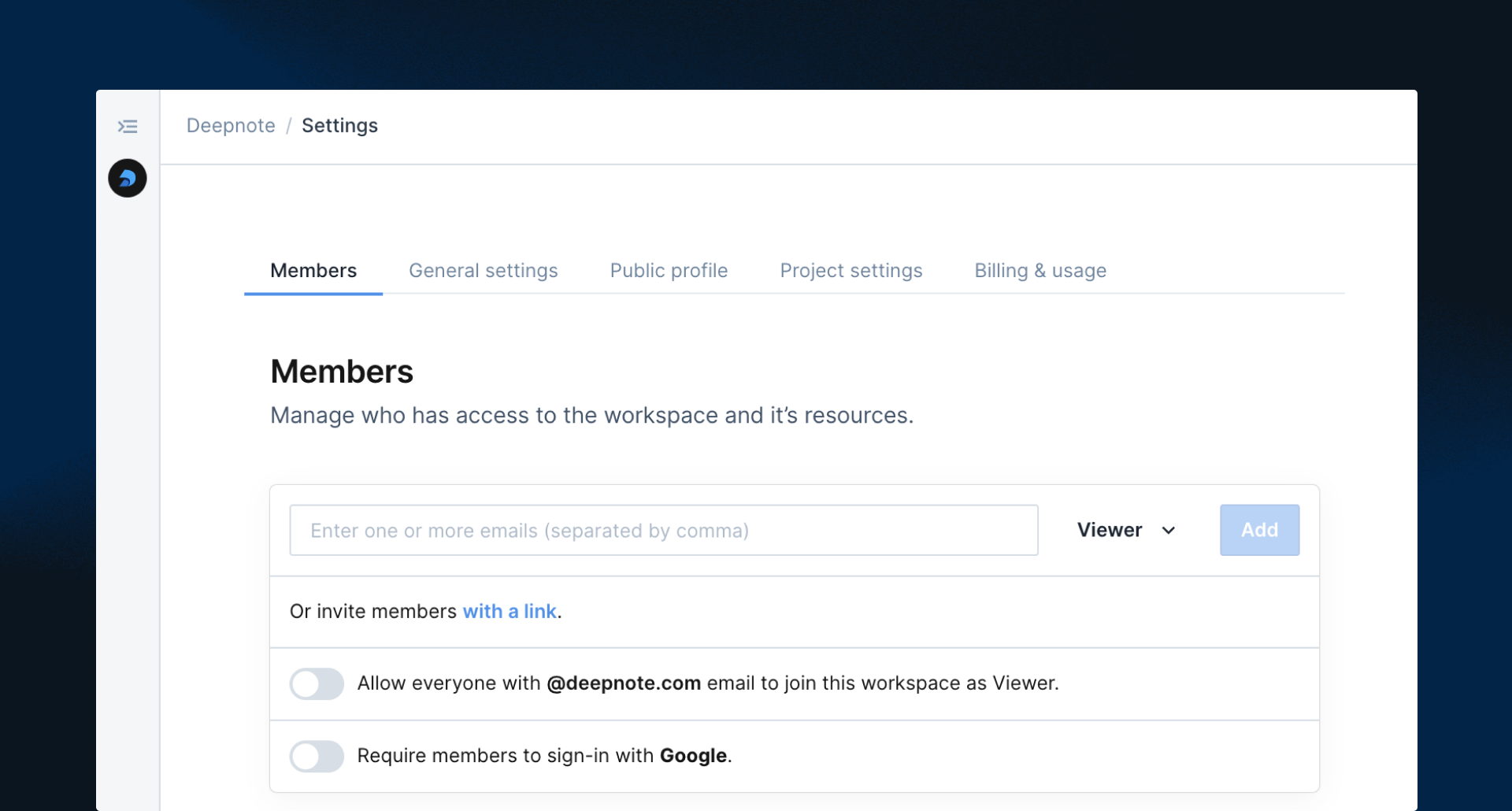Data can transform how organizations operate — but not if it’s out of reach, inaccessible, or hard to understand.
For all-in-one human resources platform Gusto, making it easier to explore data and uncover insights, as well as share those insights with decision-makers, is a top priority.
Learn how Gusto used Deepnote to centralize its analytics work and empower everyone to extract value from it.
Supporting speed & scalability
Gusto is designed to help businesses empower their people. Its HR platform is used by more than 200,000 organizations across the US for everything from hiring and onboarding to payroll and benefits.
But the company isn’t just focused on helping its customers and their employees do their best work — Gusto lives those values as well.
Scott Jacobsen, Head of People Analytics & Insights, was tasked with helping the company proactively engage and retain talent to drive better business outcomes.
“We help leaders make informed decisions and understand the ‘why’ when it comes to people and candidate metrics,” Jacobsen said.
His team — which includes data analysts, data scientists, a project manager, and a data engineer — had historically helped Gusto understand the main drivers of employee engagement and attrition in order to improve internal programs and employee representation.
“After all, employees are the biggest expense a business has,” Jacobsen said. “Providing such insights has a huge impact on the success of the company and helps the people and recruiting teams focus their strategies.”
But as Gusto scaled, maintaining high levels of efficiency — as well as sharing his team’s insights — became more difficult.
The team’s work was spread across multiple tools — Amazon Glue, SQL editors, Tableau, Google Colab. The process of wrangling data, creating snapshots of the analysis, and then moving them into Google Docs for stakeholders to view was disjointed and inefficient.
It became harder for the team to connect the dots between the various platforms. Team members had limited visibility into each other’s work and spent valuable time hunting for information. Additionally, the tools the team was using were too technical for most non-engineers to use, which resulted in some team members feeling disempowered.
Jacobsen needed a way to help his team stay informed and focused on helping the business instead of wasting time tracking down and centralizing information.
Enter Deepnote.
Enhancing exploration & collaboration
Gusto was already a Deepnote customer.
“I learned about Deepnote because our data science team uses it to run their interview process,” Jacobsen said. “We decided to give it a try to centralize our work.”
With Deepnote, Jacobsen's team created one central place for storing, organizing, and sharing notebooks and applications.

But that’s not all. The team uses Deepnote for:
Building data pipelines
Gusto replaced AWS Glue and now develops data transformation in Deepnote, creating numerous metric tables in Redshift and developing data models for Tableau self-service to make answering ad-hoc questions faster and easier.
“Deepnote brings everything into one place so we can easily take a statistical model build from our data science team and automate the results into our data warehouse,” Jacobsen said.
Analyzing SQL
Gusto replaced its previous SQL editors and now runs SQL in Deepnote. Instead of trying to track down someone’s locally stored query, the team performs analysis on people and candidate data and stores it in notebooks teammates can access to answer common questions and rerun themselves as needed.
And since Deepnote is collaborative by design, teammates can work together, either writing code in real time or leaving comments to collaborate asynchronously.
See Deepnote's real-time collaboration in action in the video below:
Conducting diagnostic & predictive analysis
Gusto performs 100% of its diagnostic and predictive analyses in Deepnote — from adverse impact analysis and attrition prediction models to recruiting funnel analysis. The ability to easily code, visualize data, and provide context all in the same space makes it easier for the company to understand why certain metrics are what they are and use those insights to inform broader business decisions.
Scheduling updates
Deepnote makes it easy for the team to update notebooks and applications on a daily, weekly, or even hourly basis. This ensures data is always up to date for team members and business stakeholders.
Collaborating with business stakeholders
Deepnote provides Jacobsen’s team with a more scalable medium for exploring data while giving company leaders a familiar format for viewing analysis.
“Our team was used to Google Docs, so when we moved over to Deepnote, we appreciated the similar look and feel as well as the added scalability — we’re no longer copying and pasting screenshots from external sources,” Jacobsen said.
And since Deepnote allows users to hide the backend analysis and data management, the team can create business user-friendly materials while enabling more technical teams to continue iterating and fine-tuning analysis behind the scenes. Updates are simply pushed live to the notebook.
Balancing accessibility & security
Gusto can easily manage permissions within Deepnote to differentiate between viewers, contributors, editors, administrators, and guests, allowing the team to easily share notebooks — either by inviting teammates to a workspace or sending a link — while maintaining data security.

Bringing everyone into analytics
Less time spent searching for and centralizing data means more time for predictive analytics. Jacobsen and his team use Deepnote throughout the entire analytics lifecycle, from setting up data pipelines all the way through sharing and presenting insights.
The improvements in organization and collaboration have helped make this work — and the process of building on it — much more efficient. The days of having to track down a report on someone else’s machine are long gone.
“We can all see each other’s code and it makes writing new analyses far easier since we’re never starting from scratch,” Jacobsen said.
It’s also helped teammates empower their peers, regardless of their technical knowledge.
“It brings the team together in a central platform to collaborate on code, and Deepnote’s easy-to-use platform has improved the SQL skills of our less-technical team members,” Jacobsen said. “Furthermore, our non-technical stakeholders can use input variables to plan.”
The ability to break down technical barriers and bring all stakeholders into the team’s analytics work has arguably been the greatest benefit.
“Because we partner with many people across the company — we might have 200 people viewing our analysis — the ability to publish notebooks into an article using Deepnote has been a game changer,” Jacobsen said. “Now all of our important stakeholders can work and interact with the article.”
The result? Better business decisions and more empowered team members, from the analytics team to the C-suite.
Learn more about Deepnote’s organization features
Get started for free to see how Deepnote makes it easy to centralize and organize data projects.